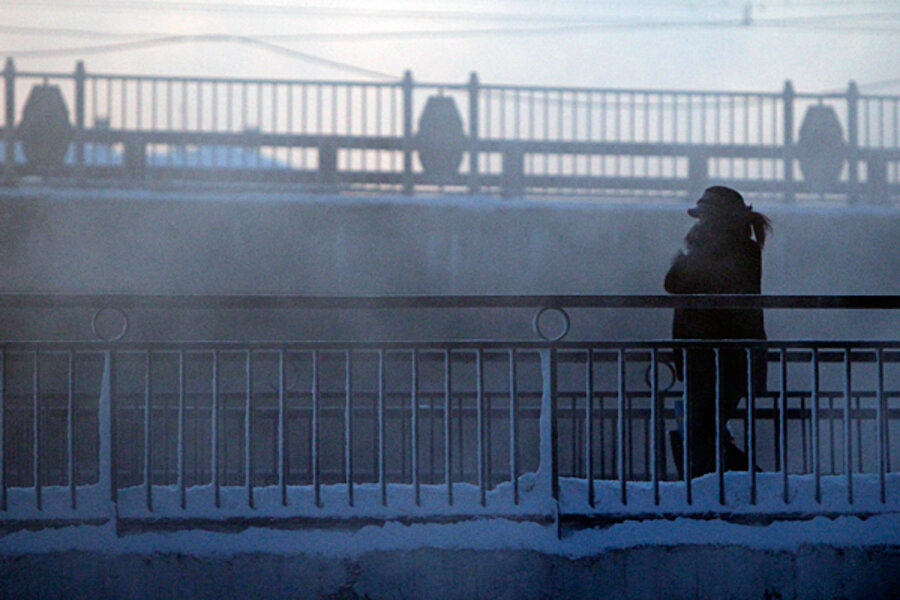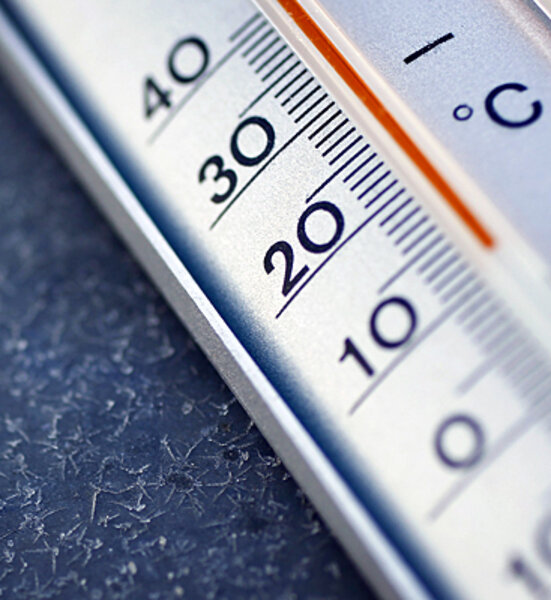Eastern Europeans resourceful in face of record cold snap
Loading...
| Brasov, Romania
News of shocking death toll and whole regions shut off from the rest of the world by snow and closed roads and railways have dominated headlines from Eastern Europe in recent days. But even as officials struggle to respond to extreme temperatures, many people are forging ahead with daily life, fortified by years of experience and hot drinks.
Temperatures have hit 100-year lows in some parts of the region, nearing minus-25 degrees F., well below the usual level. The death toll across the region now tops 200 – roughly 30 in Poland, 22 in Romania, at least 10 in Bulgaria, and more than 160 in Ukraine, where many people reportedly froze to death on the streets. In Serbia, almost 12,000 people are said to be isolated, trapped in remote villages and farmsteads.
In Romania, trains and flights have been cancelled, and the border with Bulgaria was temporarily closed due to snow. The situation is serious enough for the government to deploy armored cars to rescue stranded motorists, and for the mayor of Bucharest to call for bakers to lay in stocks of bread in preparation for worsening conditions.
But in Brasov, a picturesque city in Transylvania sheltered behind the Carpathian Mountains, children are still going to school, walking through snowy streets as tractors spread grit on the roads. For adults venturing out of home, there are plenty of opportunities to take a break to warm up while running errands. Signs in the windows of the town’s many invitingly snug taverns prominently advertise hot drinks.
Ninety miles away by road, in the village of Copsa Mare, the holy water in the Orthodox church froze solid, and locals skidded and slipped on the icy roads. But this did not prevent the ubiquitous horse-and-traps galloping through the village. Nor had the snow stopped British tourist Charlie Bingham from hiking across the hills to investigate Copsa Mare’s decrepit evangelical church, built by German immigrants in the early 14th century and fortified against marauding Tartars, Turks, and Hungarians but ultimately a victim to neglect. The fairytale appearance of Transylvania’s mountaintop castles and villages in thickly wooded valleys was intensified by snow and bright winter light.
"I don't think I've ever experienced temperatures this cold, but it's almost added to the charm of the trip. But I'm amazed the country doesn't shut down – in England, everything would grind to a halt. Here everyone seems prepared," Mr. Bingham says.
Even in the era of imported produce, the preparation of pickled vegetables in the autumn to sustain a household through to spring is near-universal. The larder stacked with glass containers of preserved fruit and vegetables was identified as a central feature of the Serbian way of life by the late Serbian journalist Momo Kapor in his essay “Jars of Sunshine.” (Editor's note: The original version of this article incorrectly translated the name of the essay.)
From the Baltic Sea to the Ionian Sea, west of Greece, those in the countryside send packages of winter sustenance steeped in vinegar to their city-dwelling relatives unfortunate enough not to have a garden.
In Bulgaria, thousands of schools have closed, roughly 50 villages and small towns have been cut off from road access, and the government has issued a “Code Orange” danger warnings in 10 of 28 provinces, advising people to stay home if not on urgent business.
But in the capital, Sofia, Bulgarians continue to go to work as usual. Most public transport remains undisrupted, kept running by a combination of preparedness, determination, and ingenuity. (On New Year’s Day 2008, in similarly icy if marginally less frigid conditions that would have led to transport chaos in his native Britain, this correspondent traveled back to Sofia from the Bulgarian mountains in a bus, the broken front door of which was kept in place with a knotted sheet.)
While the depths to which the mercury has sunk may have reached record levels, cold weather in winter is nothing new to Eastern Europe, particularly the inland areas. Many people spend most of their time in one or two heated rooms of their houses and apartments for the winter months.
"Everyone's at work. I can't really tell the difference between minus-5 and minus-20 myself," says Gergana Trakova, an office worker in Sofia.








